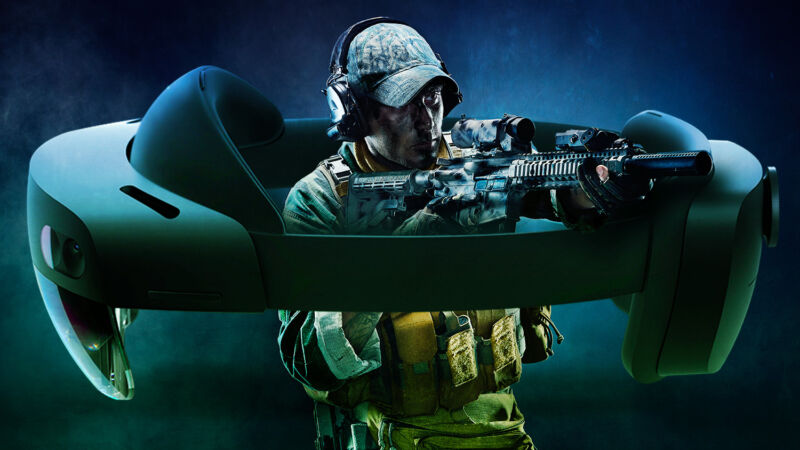
On Wednesday, the US Army formally moved forward with the largest ever government-related deal for headsets in the virtual and augmented reality sector: a 10-year agreement with Microsoft to provide 120,000 headsets “based” on the HoloLens line.
Reports by CNBC and Bloomberg point to a $21.9 billion value for this week’s updated arrangement, following its initial announcement in November 2018. Neither of those reports point to exact reasons for the deal’s jump from an initial contract value of $480 million, despite that earlier deal confirming similarly high headset numbers.

Official IVAS image as provided by Microsoft as part of Wednesday’s announcements. Notice an array of sensors across the top, along with an apparent headset-strapping requirement for this model.
Microsoft
The headset model in question, as revealed by Microsoft’s Alex Kipman in a Wednesday blog post, appears to deviate slightly from its originally announced intent. While it’s still known as the Integrated Visual Augmentation System (IVAS) and includes an array of HoloLens-like sensors, the model seen in today’s announcement appears to attach to a helmet. Ars previously reported that Microsoft and the US Army intended for this headset to not require mounting on a helmet, arguably to increase its applicability.
Otherwise, we assume the headset’s goals still align with previously known plans to amplify “Lethality, Mobility, and Situational Awareness,” whether in training or in combat. The enterprise-only HoloLens 2 has already improved on crucial technical fronts, particularly the “field of view” for virtual screen elements, while the IVAS will include military-grade features previously announced, such as thermal and night vision cameras, visual target acquisition, vitality sensors, and a system that can detect if wearers suffer concussions.
Intriguingly, the Army’s Wednesday announcement confirms the most video game-like feature yet for a HoloLens-derived headset: “a life-like mixed reality training environment.” Such a combat simulator would technically count as the first official gun-combat “game” for any HoloLens product, since the hardware has largely not been aimed at gamers—even though it will likely require compatible “controllers” like real-world guns. (Hence, such a simulator is probably out of most users’ reach.)
HoloLens for war?
Today’s announcement follows heightened scrutiny over the Department of Defense’s deals with Microsoft. The loudest opposition has come from Amazon, whose AWS department was in a bidding war for a $10 billion cloud-computing contract eventually awarded to Microsoft Azure.
Before that deal was inked in October 2019, Oracle sued to claim that the bidding process was “tainted” by several DOD staffers’ close ties to Amazon. Amazon itself filed a lawsuit in December 2019, with its claims largely revolving around then-President Donald Trump’s public feuding with CEO Jeff Bezos. Amazon continues to challenge this contract in court.
Microsoft has faced internal opposition as well, particularly to the HoloLens-related piece of these deals. An early 2019 open letter penned by Microsoft employees, titled “HoloLens for good, not war,” demanded that Microsoft cancel the IVAS contract, due in part to it being internally developed with weaponization in mind—as opposed to providing open-ended software that a military division might then retrofit to support combat or violence. Microsoft CEO Satya Nadella replied at the time by telling staffers that the company would not “withhold technology” from democratic governments who “protect the freedoms we enjoy.”









